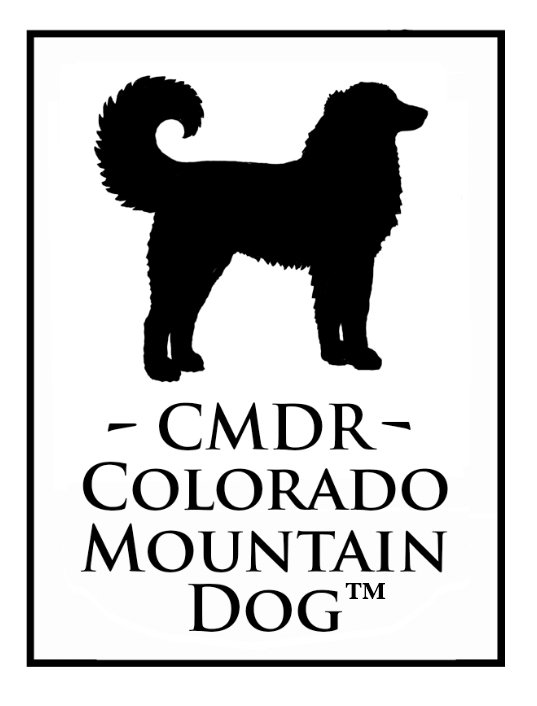~ Articles ~
Breeding For Color
Breeding an animal for color is a shallow consideration in genetic priorities. It isn’t that you can’t breed for color, it’s that, if you do you need to have it well down the list of priorities. At the beginning of this breed there were some who thought the CMD should only be white. The two dogs in the banner are a white, and a faded badger who was born looking like a pinto with dark patches over both white. Now they are both white, but the pigment is heavier in the skin of the faded dog (note the nose color) and will stand up to the sun better.
Establishing a color in the early development of a breed is genetic suicide, unless it is a designer breed where the color is already established in a wide gene pool from the two established breeds being combined to make a new breed.
But for a breed like the Colorado Mountain Dog, a function oriented breed, a color mandate would limit all genetic selection to only white dogs, and hidden color genes which are carried would cause masses of unwanted dogs to be born.
After a breeder’s type is established, he or she can narrow color, being careful to retain the more important traits. And this part is fun. White is my personal favorite, but I love it coming from the faded badgers, because I also like the deep skin color.
Color/patterns are genetically connected. Solid tan with black muzzle, broken badgers, and genetic whites are different combinations of pattern genes. Keeping the carried genes diverse is genetically healthier for the dogs.
One of the big flaws in many breed organizations, is people getting into power who have personal preferences that are inversely proportional to their genetic knowledge, and make the mistake that a breed should look like their personal preference. But a well run breed should give people latitude to work with what delights them. Many people like the whites. Many people like the tan with black muzzles. Some of our breeders have been working on CMDs that are mostly jet black or silver and the results of that have been just breathtaking.
Beyond the mandates which have mostly to do with guarding aptitudes and temperament aspects that make them suitable for small farms and families.
Function function function. (Pictured: a genetic white, and a badger faded to white. They are both white now but the skim pigment is different.)

